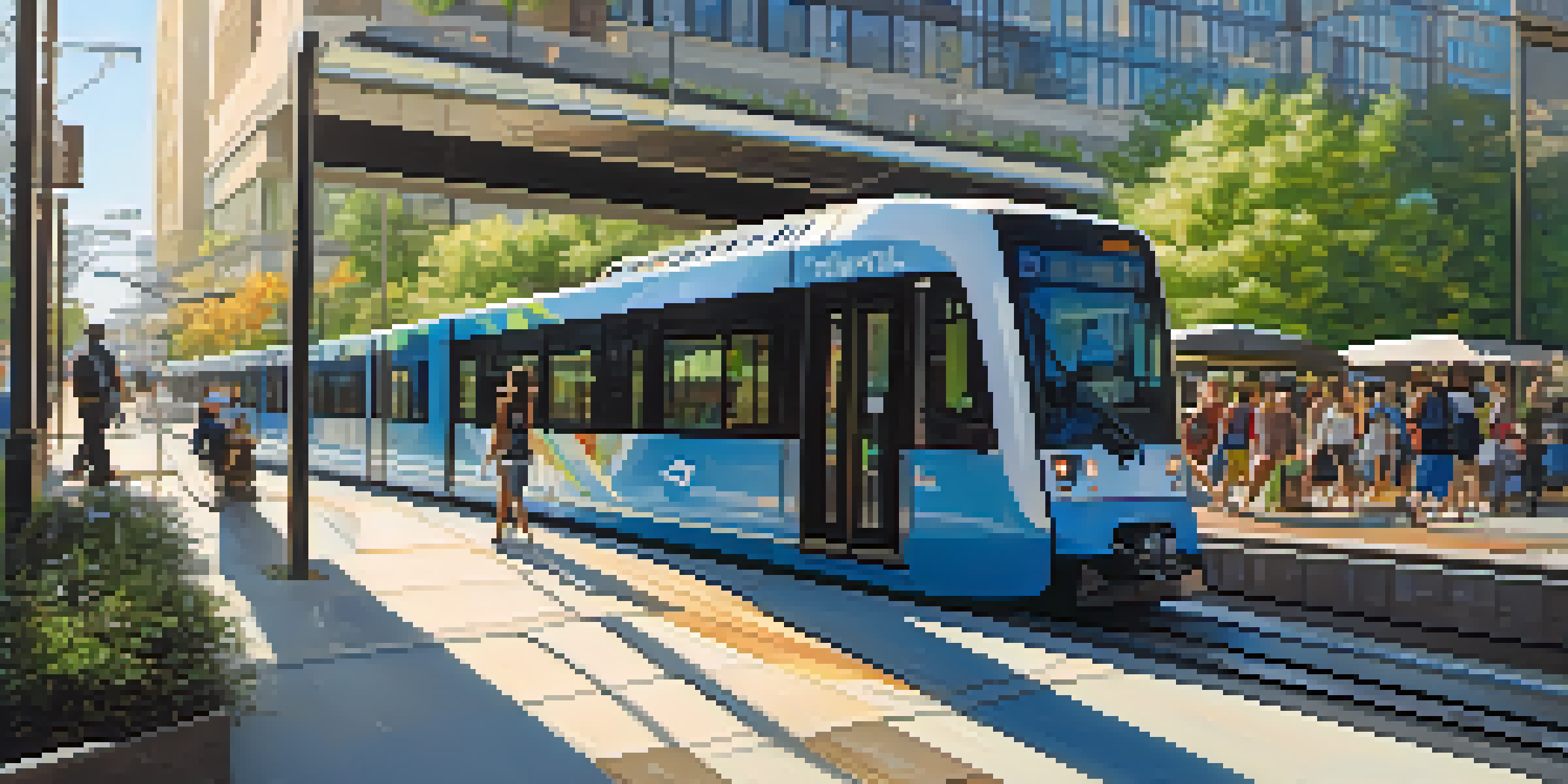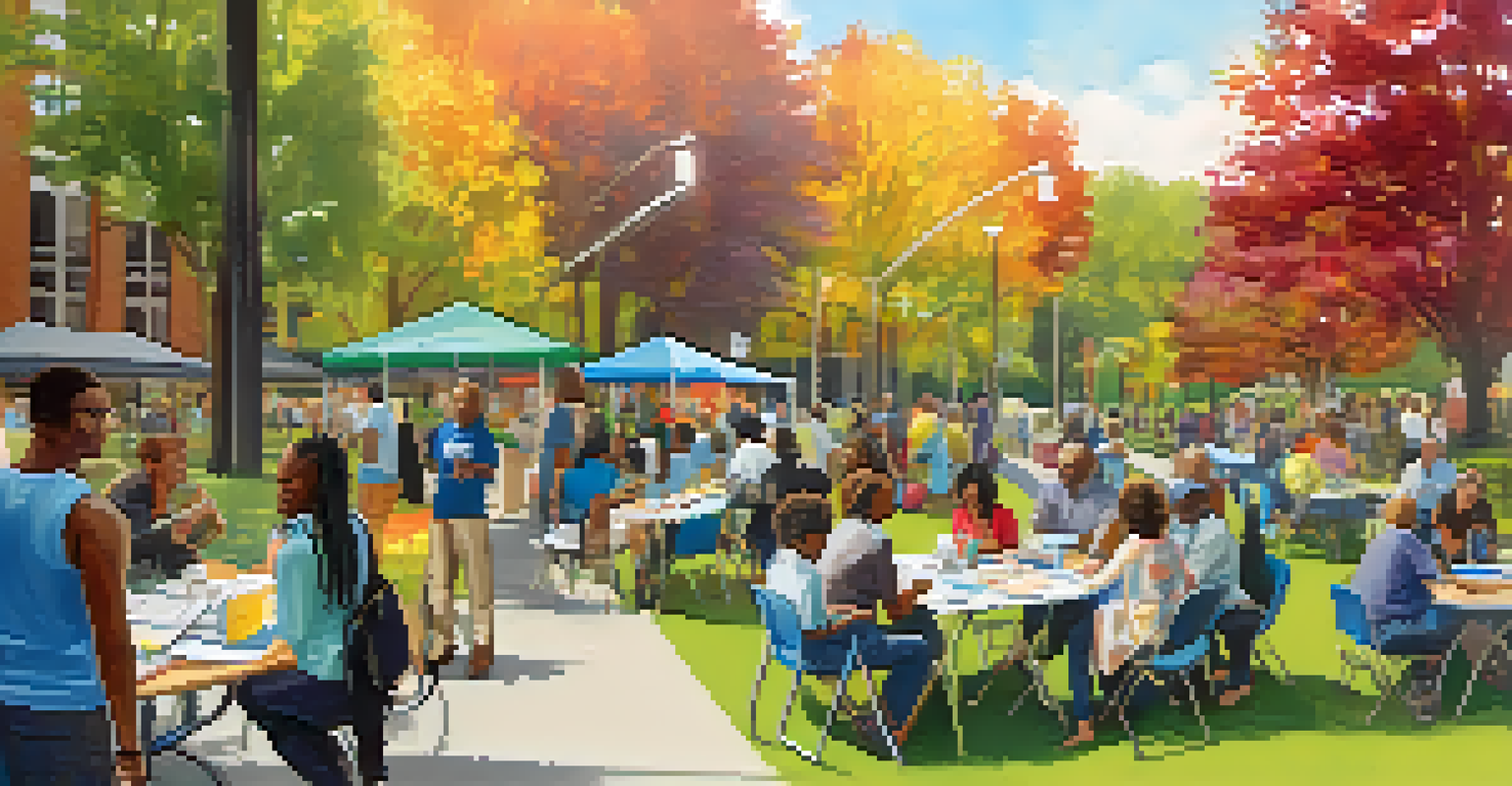Transportation Innovations: How Charlotte Became Accessible

Charlotte's Transportation Evolution: A Brief Overview
Charlotte has undergone a significant transformation in its transportation landscape over the past few decades. Once dominated by personal vehicles, the city is now embracing a variety of transit options to meet the needs of its growing population. This shift not only enhances mobility but also fosters economic growth and sustainability.
Public transportation is the backbone of any city. It connects people to jobs, schools, and services, fostering a sense of community and belonging.
The introduction of light rail systems, bus routes, and bike lanes marks a pivotal change in how residents and visitors navigate the city. Each innovation plays a crucial role in reducing traffic congestion and minimizing environmental impact. As Charlotte continues to expand, these transportation initiatives are essential for maintaining a livable urban environment.
Moreover, the city's commitment to improving accessibility reflects a broader trend in urban planning. By prioritizing public transit and alternative transportation methods, Charlotte is setting a benchmark for other cities facing similar challenges. This evolution is more than just infrastructure; it represents a community's vision for a more inclusive future.
The Light Rail Expansion: Connecting Communities
The light rail system in Charlotte, known as the Lynx, has been a game-changer for residents. By connecting various neighborhoods and employment centers, it has made commuting more efficient and reliable. The expansion of this system reflects the city’s commitment to providing accessible transportation options for all.

With the addition of new stations, more people can easily reach important destinations like schools, hospitals, and entertainment venues. This connectivity not only enhances accessibility but also encourages public transit usage, reducing reliance on cars. As a result, the light rail has become a lifeline for many Charlotteans.
Diverse Transit Options Enhance Mobility
Charlotte is transforming its transportation landscape with light rail, biking infrastructure, and improved public transit, promoting greater accessibility for its residents.
Furthermore, the impact of the light rail extends beyond transportation. It fosters economic development along its corridors, revitalizing areas and attracting new businesses. This symbiotic relationship between transit and urban growth showcases the potential of well-planned transportation innovations.
Biking Infrastructure: Pedaling Towards Accessibility
Charlotte's investment in biking infrastructure is another crucial aspect of its transportation revolution. By creating dedicated bike lanes and bike-sharing programs, the city encourages cycling as a viable alternative to driving. This initiative not only promotes health and fitness but also plays a role in reducing traffic congestion.
A city is not just a collection of buildings and roads; it's a living entity shaped by the ways its residents move and interact.
The bike lanes are strategically placed to connect key areas of the city, making it easier for cyclists to navigate safely. This has led to an increase in bike ridership, with more residents opting for two wheels over four. As cycling becomes more mainstream, it fosters a sense of community and encourages social interactions.
Moreover, these biking initiatives align with broader environmental goals. By reducing carbon emissions and promoting sustainable transportation, Charlotte positions itself as a forward-thinking city. The benefits of biking extend beyond individual riders, contributing to a healthier planet for everyone.
Public Transit Improvements: A Focus on Inclusivity
The enhancement of public transit services in Charlotte demonstrates the city's dedication to inclusivity. By improving bus routes and schedules, the city ensures that all residents, including those in underserved areas, have access to reliable transportation. This focus on inclusivity is vital for fostering equity in urban mobility.
Additionally, the implementation of accessibility features, such as low-floor buses and priority seating, caters to individuals with disabilities. These improvements make public transit more user-friendly, encouraging a diverse range of individuals to utilize the system. As a result, public transit becomes a viable option for everyone, regardless of their mobility needs.
Community Engagement Drives Change
Active involvement of residents in planning processes ensures that transportation policies reflect the needs of the community, fostering trust and support.
Furthermore, community engagement plays a significant role in shaping these public transit improvements. By actively seeking feedback from residents, city planners can better understand the unique challenges faced by different communities. This collaborative approach ensures that transportation solutions are tailored to meet the needs of all Charlotteans.
Smart Technology: Enhancing Transportation Efficiency
Charlotte is harnessing the power of smart technology to enhance transportation efficiency. From real-time tracking of buses and trains to mobile apps that provide transit information, technology is making it easier for residents to navigate the city. These innovations streamline the commuting experience and reduce wait times.
The integration of smart traffic signals and management systems also helps alleviate congestion. By optimizing traffic flow, these technologies minimize delays and improve overall transportation efficiency. This not only benefits daily commuters but also enhances the city’s attractiveness to businesses and visitors.
Moreover, the use of data analytics enables city planners to make informed decisions about transportation infrastructure. By analyzing patterns in transit usage, Charlotte can identify areas for improvement and allocate resources effectively. This data-driven approach is key to developing a responsive and adaptive transportation system.
Community Engagement: Shaping Transportation Policy
Community engagement is at the heart of Charlotte's transportation innovations. The city actively involves residents in the planning process, ensuring that their voices are heard. This collaborative approach fosters a sense of ownership and ensures that transportation policies reflect the community's needs.
Public forums, surveys, and workshops allow residents to share their insights and experiences. By understanding the unique challenges faced by different neighborhoods, city planners can develop tailored solutions that enhance accessibility. This grassroots involvement is crucial for building trust and support for transportation initiatives.
Smart Tech Boosts Transportation Efficiency
The integration of smart technologies in transportation systems is streamlining commutes and improving overall efficiency in Charlotte.
Additionally, community engagement extends to educating residents about available transportation options. By promoting awareness of public transit, biking, and carpooling, Charlotte encourages sustainable travel habits. This collective effort strengthens the community and paves the way for a more accessible future.
Looking Ahead: The Future of Transportation in Charlotte
As Charlotte continues to grow, the future of transportation looks promising. Ongoing investments in infrastructure and technology will further enhance accessibility for all residents. The city's commitment to innovation ensures that transportation remains a priority as it evolves.
Future projects may include expanded transit options, improved connectivity, and enhanced sustainable practices. By embracing new technologies and adapting to changing needs, Charlotte can maintain its position as a leader in urban transportation. This proactive approach is essential for accommodating the city's anticipated growth.

Moreover, fostering a culture of collaboration among stakeholders—government, businesses, and residents—will be key to realizing these transportation goals. By working together, Charlotte can create a transportation system that is efficient, inclusive, and forward-thinking. The journey towards a more accessible city is just beginning.